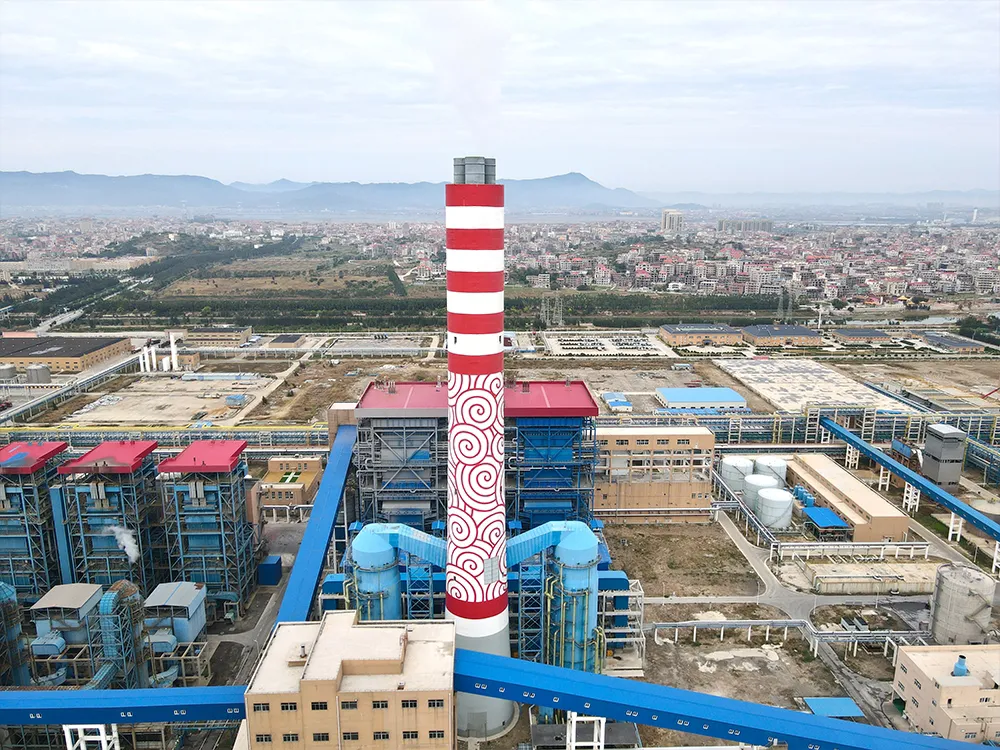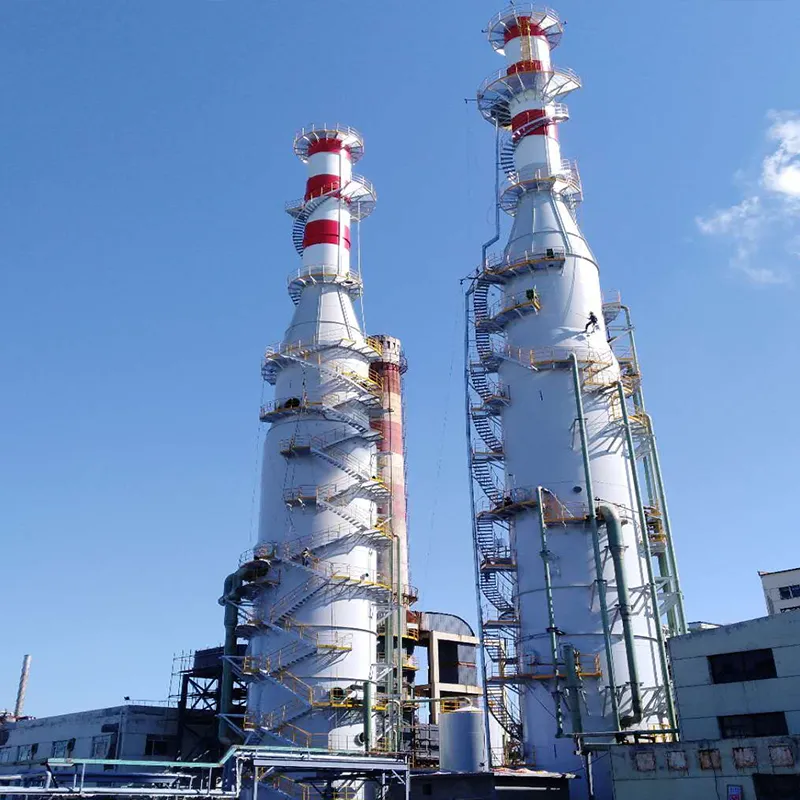Combating Air Pollution Through Effective Emission Control
Industrialization has brought progress and economic growth, but it has also introduced significant environmental challenges. Among the most pressing is air pollution caused by the emission of sulfur dioxide (SO₂) from power plants and manufacturing facilities. One of the most widely adopted and effective technologies to address this problem is flue gas desulfurization, a process designed to reduce SO₂ emissions from exhaust gases before they are released into the atmosphere. As governments tighten air quality regulations and industries strive for cleaner operations, the role of flue gas desulfurization becomes increasingly critical in modern pollution control strategies.
The Basics of Flue Gas Desulfurization
What the Process Involves
Flue gas desulfurization, often abbreviated as FGD, refers to a set of technologies used to remove sulfur dioxide from exhaust flue gases produced by fossil fuel combustion. This typically occurs in coal-fired power plants, cement kilns, steel mills, and other industrial operations where sulfur-containing fuels are burned. The process commonly uses a sorbent, such as limestone or lime, to chemically react with SO₂ and convert it into a harmless byproduct like gypsum.
Depending on the plant's size and design, FGD systems can be either wet, dry, or semi-dry. Wet systems are the most prevalent and effective, but dry and semi-dry options are often used in smaller facilities or where water conservation is necessary.
Historical Context and Development
The concept of flue gas desulfurization emerged in the mid-20th century as a response to rising concerns about acid rain and deteriorating air quality. Early systems were rudimentary and costly, but advancements in technology and materials have made modern FGD systems far more efficient and cost-effective. Today, FGD is considered a mature, reliable technology that plays a vital role in controlling industrial emissions worldwide.
Countries with stringent environmental regulations have made FGD adoption mandatory for high-emission facilities, contributing significantly to improvements in air quality over recent decades.

Environmental Impact and Air Quality Improvement
Reducing Sulfur Dioxide Emissions
The primary purpose of flue gas desulfurization is to dramatically reduce the amount of sulfur dioxide released into the air. SO₂ is a major contributor to acid rain, which damages forests, aquatic ecosystems, and buildings. By removing up to 95% or more of SO₂ from flue gases, FGD systems help mitigate these environmental harms and promote a healthier, more sustainable atmosphere.
In urban and industrial regions where air quality is a concern, the deployment of FGD technology can significantly lower atmospheric concentrations of sulfur-based pollutants, improving public health outcomes.
Supporting Compliance with Air Quality Standards
Governments around the world have established strict limits on SO₂ emissions as part of broader air pollution control frameworks. Flue gas desulfurization systems help industrial facilities comply with these regulations, avoiding penalties and contributing to national environmental goals.
Compliance is not just a legal requirement—it also enhances a company’s reputation and demonstrates commitment to sustainable practices. Implementing FGD solutions reflects a forward-thinking approach to environmental responsibility.
Variations in Flue Gas Desulfurization Technology
Wet Scrubbing Systems
Wet scrubbing is the most widely used method in flue gas desulfurization. In this process, the flue gas is brought into contact with a slurry of alkaline sorbents, typically limestone or lime, in an absorption tower. The chemical reaction converts sulfur dioxide into calcium sulfite or gypsum, which can be disposed of or recycled as a commercial byproduct.
Wet systems are known for their high removal efficiency and suitability for large-scale operations. They are also capable of handling high-volume, high-temperature exhaust streams.
Dry and Semi-Dry Technologies
Dry and semi-dry systems offer a viable alternative for smaller or water-sensitive facilities. In dry systems, a powdered sorbent is injected into the flue gas stream, reacting with SO₂ before a particulate control device captures the resulting solids. Semi-dry systems combine aspects of wet and dry processes by using a spray dryer to introduce the sorbent in a humid form.
While they may not match the removal efficiency of wet scrubbers, these systems are easier to install, require less space, and use less water—making them ideal for retrofitting existing plants with limited infrastructure.
Operational Benefits for Industrial Facilities
Enhanced Equipment Longevity
By reducing SO₂ in flue gases, flue gas desulfurization indirectly protects downstream equipment from corrosion. Sulfur compounds can form acidic compounds that degrade metal surfaces, shorten equipment lifespan, and increase maintenance costs. By neutralizing these compounds, FGD helps preserve the integrity of heat exchangers, stacks, and ductwork.
This benefit translates into lower operating costs and improved reliability, especially in high-capacity facilities where maintenance downtime can be costly.
Opportunities for Byproduct Utilization
A notable advantage of some flue gas desulfurization processes, especially wet systems, is the creation of gypsum as a byproduct. This synthetic gypsum can be used in the manufacture of drywall, cement, and fertilizers. Instead of contributing to waste, the byproducts can be monetized, turning environmental compliance into a revenue opportunity.
This circular approach aligns with modern sustainability practices and supports waste minimization efforts within industrial operations.
Economic and Policy Considerations
Cost-Benefit Analysis of Installation
Although installing a flue gas desulfurization system requires capital investment, the long-term savings in emission penalties, maintenance, and compliance make it a worthwhile expense. The overall economic feasibility improves when considering the system's lifespan, energy efficiency, and potential byproduct revenue.
Many governments offer subsidies or incentives to promote pollution control technologies, which can further offset installation and operation costs.
Contribution to National and Global Climate Goals
FGD systems not only support local air quality but also contribute to global environmental targets. By enabling the use of cleaner combustion technologies, flue gas desulfurization helps reduce the overall environmental footprint of energy and industrial production.
Countries aiming to meet international agreements on emissions reduction—such as the Paris Agreement—can leverage FGD as a practical tool to curb sulfur-based pollution and improve national air quality indices.
Integration and Future Outlook
Technological Advancements and Automation
Modern flue gas desulfurization systems are increasingly equipped with automated controls, real-time monitoring, and predictive maintenance tools. These innovations improve operational efficiency, reduce energy consumption, and enable remote management of pollution control systems.
As digital technologies advance, the integration of FGD into smart industrial systems will likely become more common, further enhancing environmental performance and cost efficiency.
Scalability and Global Adoption Trends
Scalable design makes it possible to adapt flue gas desulfurization systems to a wide range of industrial applications, from small manufacturing plants to large utility companies. Global adoption is growing, especially in developing economies where air pollution is becoming a major concern.
As regulations evolve and public awareness increases, industries across the globe are expected to invest more in comprehensive emission control strategies that include FGD as a core component.
Frequently Asked Questions
What industries typically use flue gas desulfurization systems?
Flue gas desulfurization is widely used in coal-fired power plants, cement factories, steel mills, chemical plants, and any facility that burns sulfur-containing fuels or materials.
How effective is flue gas desulfurization at removing sulfur dioxide?
Most FGD systems remove between 90% and 99% of sulfur dioxide from flue gases, depending on the technology used and operating conditions.
Is flue gas desulfurization expensive to maintain?
While there are maintenance costs involved, many modern flue gas desulfurization systems are designed for efficiency and reliability. Routine inspections, filter changes, and slurry management are typically required.
Can flue gas desulfurization help meet environmental compliance requirements?
Yes. Flue gas desulfurization is one of the most effective ways to meet local, national, and international standards for sulfur dioxide emissions and improve overall environmental compliance.
Table of Contents
- Combating Air Pollution Through Effective Emission Control
- The Basics of Flue Gas Desulfurization
- Environmental Impact and Air Quality Improvement
- Variations in Flue Gas Desulfurization Technology
- Operational Benefits for Industrial Facilities
- Economic and Policy Considerations
- Integration and Future Outlook
- Frequently Asked Questions


